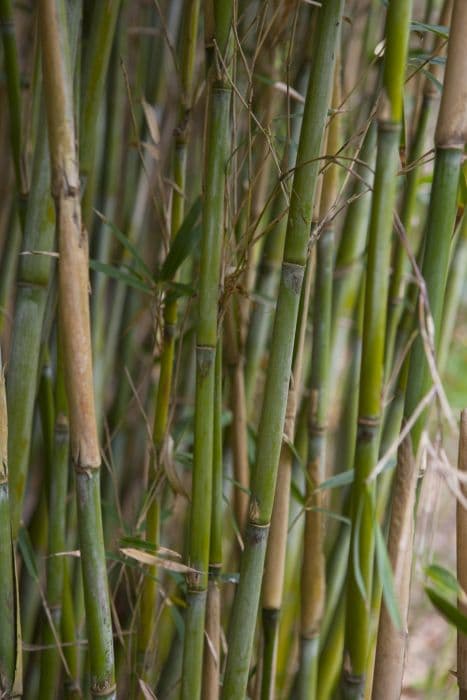Switchgrass Panicum virgatum 'Heiliger Hain'
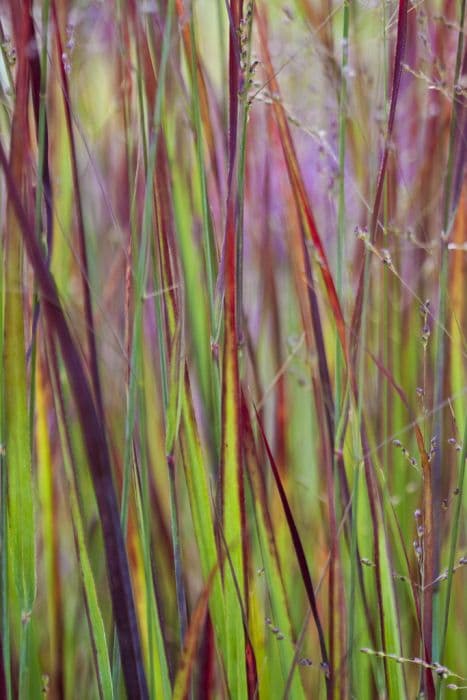

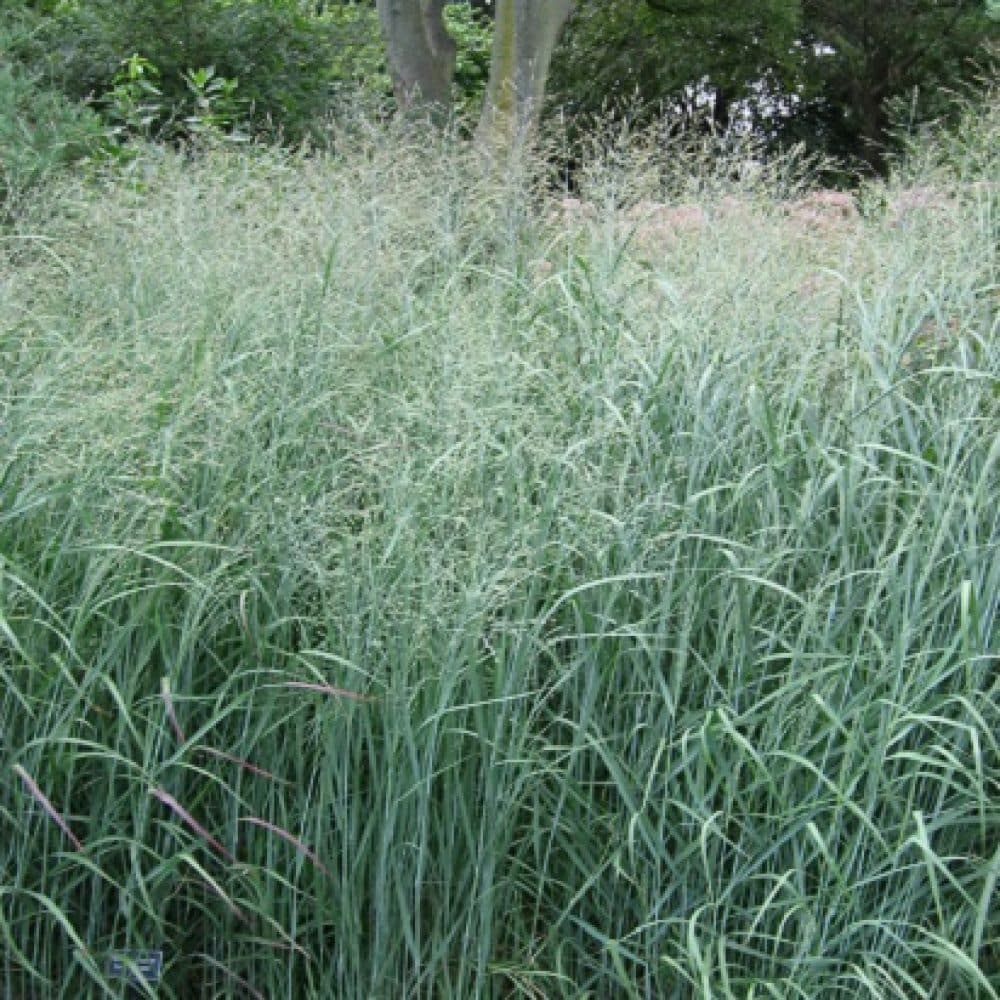
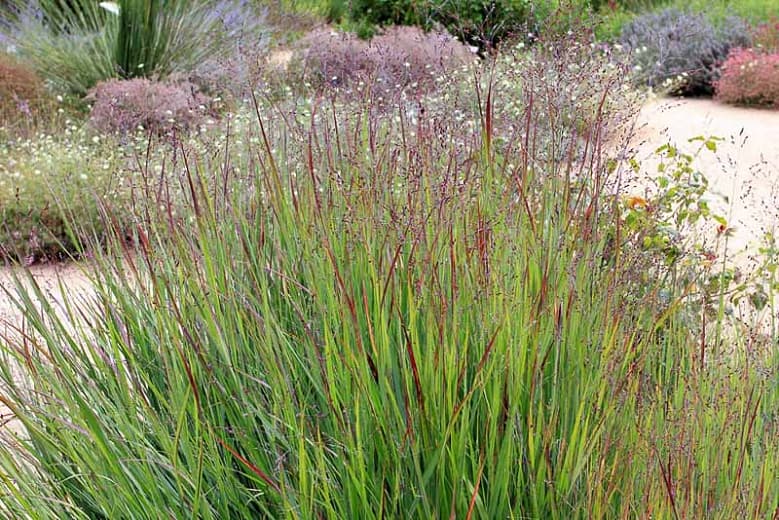

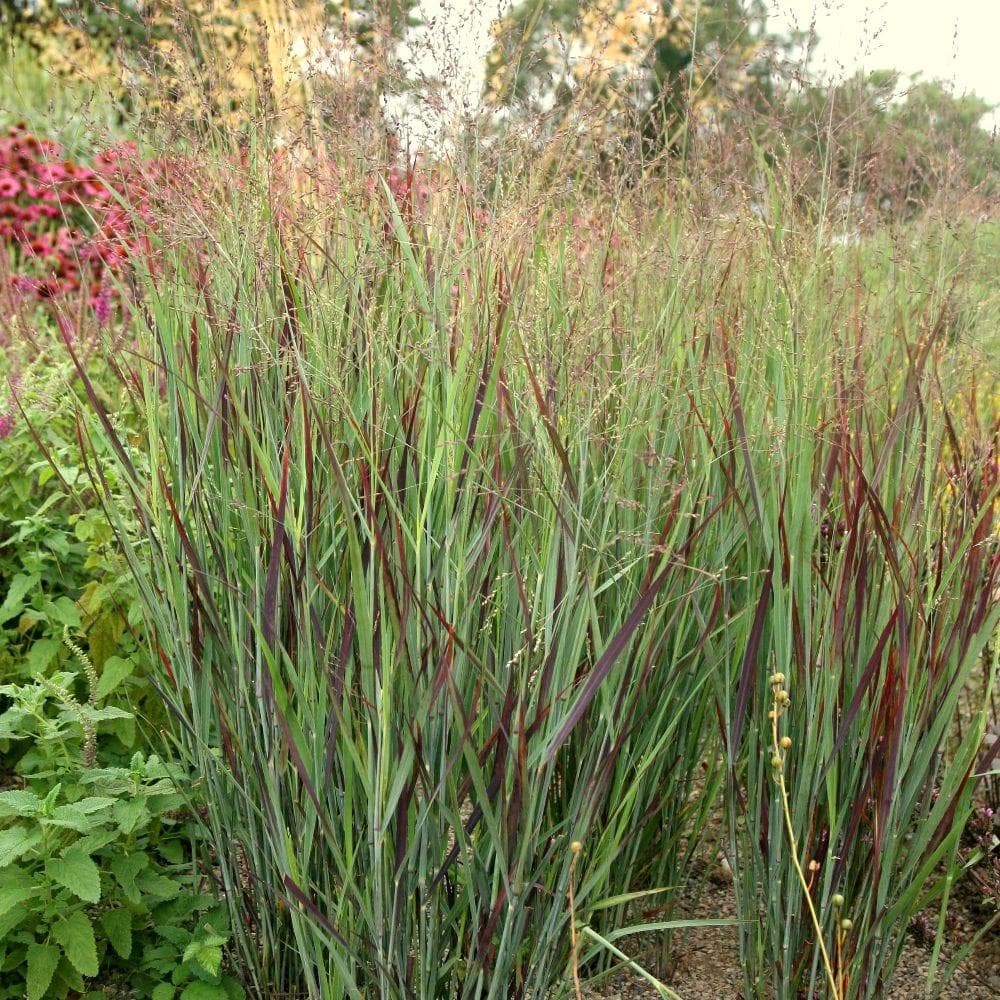
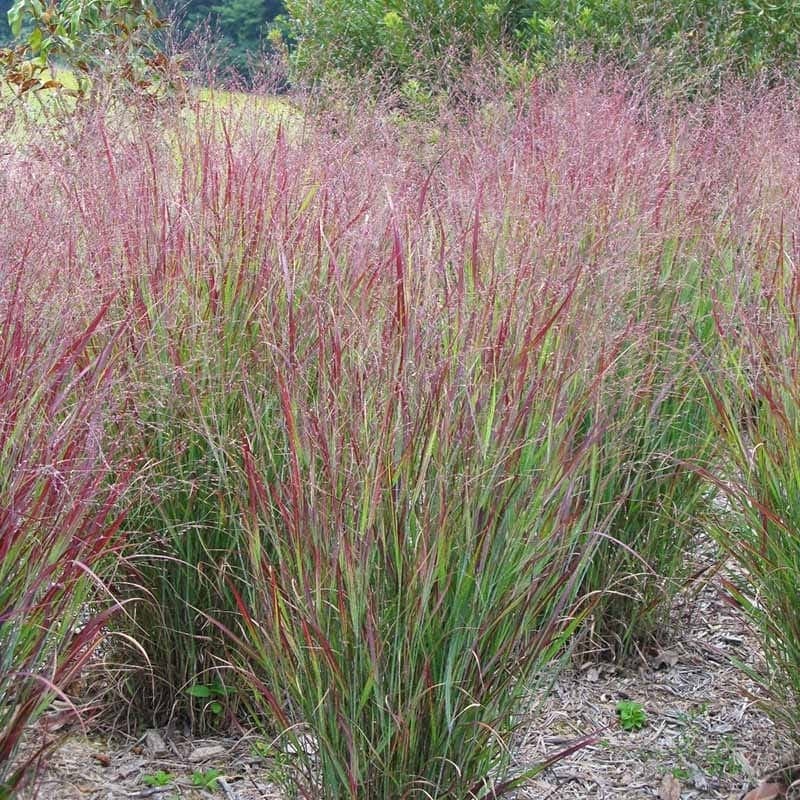
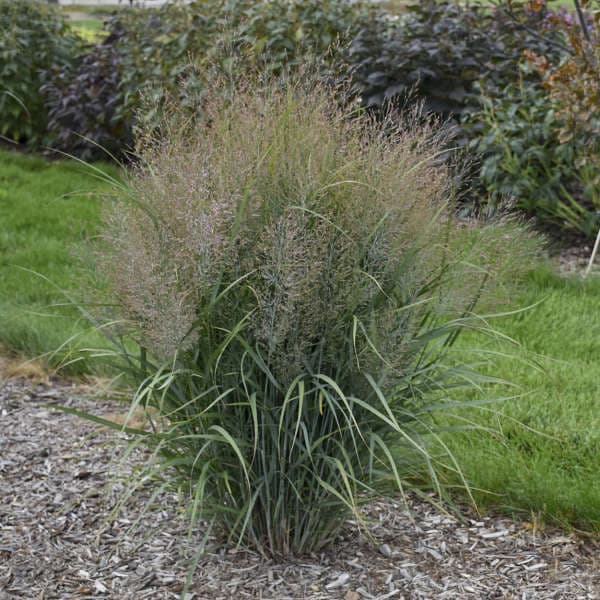
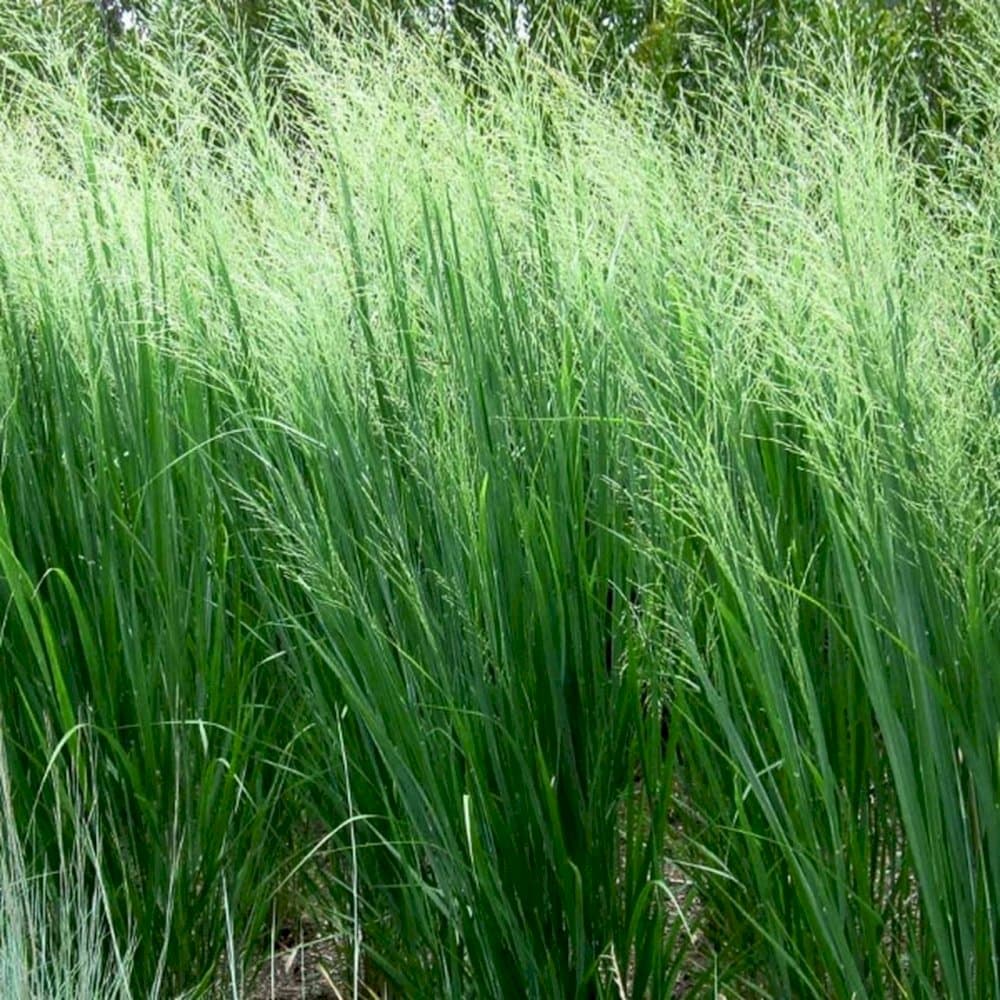


ABOUT
Panicum virgatum 'Heiliger Hain', commonly known as switchgrass, is a perennial grass known for its upright, clump-forming growth habit. The leaves of this variety possess a bluish-green hue during the growing season and tend to turn a striking gold or orange in the fall, providing year-round visual interest. The overall form is characterized by its dense, feathery texture, which comes from the small flowers that develop in panicles (loose branching clusters) and can add a soft, airy quality to the plant. As the season progresses, these flower panicles may transform into a light, tan color that persists into winter, offering an aesthetic appeal even in dormancy. The foliage and stems, which maintain an attractive appearance throughout the growing season, can become an appealing beige in the colder months. The plant's ability to maintain structure and interest throughout different seasons makes it a desirable choice for landscapes that seek year-round ornamental value.
About this plant
 Names
NamesFamily
Poaceae.
Synonyms
Switchgrass, Prairie Switchgrass, Tall Panic Grass, Wild Redtop, Wobsqua Grass, Blackbent, Tall Prairiegrass, Virginia Switchgrass.
Common names
Panicum virgatum
 Toxicity
ToxicityTo humans
Switchgrass, including the variety Panicum virgatum 'Heiliger Hain', is not known to be toxic to humans. There are no well-documented symptoms of poisoning because it is generally considered non-poisonous. Ingesting parts of this plant is not expected to lead to any adverse health consequences.
To pets
Switchgrass, including the variety Panicum virgatum 'Heiliger Hain', is also not known to be toxic to pets. It is considered safe around pets, and there are no specific symptoms associated with its ingestion by animals, as it does not typically pose a risk of poisoning to them.
 Characteristics
CharacteristicsLife cycle
Perennials
Foliage type
Deciduous
Color of leaves
Green
Flower color
Varies
Height
4-6 feet (1.2-1.8 meters)
Spread
2-3 feet (0.6-0.9 meters)
Plant type
Grass
Hardiness zones
4
Native area
North America
Benefits
 General Benefits
General Benefits- Erosion Control: The deep root system of Switchgrass helps to stabilize soil and prevent erosion.
- Wildlife Habitat: The plant provides shelter and food for wildlife, including birds and beneficial insects.
- Drought Tolerance: Switchgrass is highly drought-resistant, making it suitable for xeriscaping or areas with water scarcity.
- Low Maintenance: It requires minimal care once established, reducing the need for regular watering, fertilizing, or mowing.
- Adaptability: Switchgrass can thrive in a variety of soil types and environmental conditions.
- Bioenergy Crop: It is used as a bioenergy crop due to its high biomass production.
- Aesthetic Appeal: With its tall structure and attractive seed heads, Switchgrass can enhance the visual appeal of landscapes.
- Carbon Sequestration: The deep roots of Switchgrass can capture carbon dioxide from the atmosphere, helping to mitigate climate change.
- Soil Improvement: It can improve soil health by adding organic matter and increasing soil fertility over time.
- Windbreak: Its height and density can provide a shield against wind, reducing wind erosion and protecting other plants.
 Medical Properties
Medical PropertiesThis plant is not used for medical purposes.
 Air-purifying Qualities
Air-purifying QualitiesThis plant is not specifically known for air purifying qualities.
 Other Uses
Other Uses- Switchgrass, which Panicum virgatum 'Heiliger Hain' is a cultivar of, can be used as a natural dye source, providing a range of colors depending on the mordant used.
- In certain regions, switchgrass is used as material for weaving baskets and mats due to its strong, flexible stems.
- Switchgrass is incorporated into musical instrument construction, particularly as a material for the soundboard in some string instruments.
- It can be utilized as a biodegradable mulch in gardening to suppress weeds and retain soil moisture.
- Switchgrass serves as an eco-friendly packing material alternative to styrofoam peanuts or plastic bubble wrap.
- Farmers sometimes use switchgrass as bedding for livestock because it’s absorbent and compostable.
- As a craft material, switchgrass can be braided into decorative ropes or wreaths, especially in its dried form.
- It can be used in sediment control and erosion prevention due to its dense root system that holds soil in place.
- In landscape design, switchgrass provides a naturalistic border along walkways or drives due to its upright form and foliage texture.
- Can be used as a natural insulating material for eco-friendly building projects.
Interesting Facts
 Feng Shui
Feng ShuiSwitchgrass is not used in Feng Shui practice.
 Zodiac Sign Compitability
Zodiac Sign CompitabilitySwitchgrass is not used in astrology practice.
 Plant Symbolism
Plant Symbolism- Resilience: Panicum virgatum, commonly known as switchgrass, is a perennial grass known for its hardiness and ability to thrive in difficult conditions. It symbolizes resilience and the ability to bounce back from challenges.
- Adaptability: As switchgrass can grow in a variety of soil types and environments, it represents adaptability and the capacity to adjust to changing circumstances.
- Growth: Switchgrass is fast-growing and can reach substantial heights, symbolizing personal growth, development, and the pursuit of one's potential.
- Sustainability: Given its role in ecological restoration and use in bioenergy, switchgrass stands for sustainability and an ecological mindset.
- Flexibility: Its slender leaves and stems that can move with the wind symbolize flexibility and the importance of being open to new ideas and perspectives.
 Water
WaterFor the Switchgrass 'Heiliger Hain', it requires consistent moisture, especially during its establishment period in the first growing season. After establishment, it is more drought-tolerant and should be watered deeply but infrequently, allowing the soil to dry out slightly between waterings. The ideal approach is to provide about 1 inch of water weekly, which translates to about 0.6 gallons per square foot per week. During particularly hot or dry periods, you may need to water twice a week to maintain soil moisture, but avoid overwatering as well-saturated soil can lead to root rot. In winter, reduce watering significantly, only providing water if there are extended periods of dryness.
 Light
LightSwitchgrass 'Heiliger Hain' thrives best in full sun conditions, which means at least 6 hours of direct sunlight daily. It can tolerate partial shade, but for optimal growth and form, a location with full sun exposure is ideal. Avoid deeply shaded areas as this can lead to poor growth and a less robust plant.
 Temperature
TemperatureSwitchgrass 'Heiliger Hain' is fairly adaptable to temperature, typically tolerating a range from about -20 to 90 degrees Fahrenheit. However, for ideal growing conditions, maintaining a temperature range between 70 and 85 degrees Fahrenheit is preferred. It's a hardy plant that can survive winter freezes and in summer, it can withstand high temperatures without faltering.
 Pruning
PruningPruning the Switchgrass 'Heiliger Hain' involves cutting back the dead foliage in late winter or early spring before new growth begins. This helps maintain a tidy appearance and encourages healthy, vigorous growth. It is recommended to prune annually during this time frame. Pruning also allows for better airflow which can reduce the risk of fungal diseases.
 Cleaning
CleaningAs needed
 Soil
SoilSwitchgrass 'Heiliger Hain' thrives in a well-draining soil mix with a pH range of 5.0 to 7.0. A blend of loamy soil, coarse sand, and peat or compost is ideal to support its growth.
 Repotting
RepottingSwitchgrass 'Heiliger Hain' is a perennial grass that typically does not require frequent repotting. It is best to repot or divide the grass every 3-4 years to rejuvenate its growth and manage its size.
 Humidity & Misting
Humidity & MistingSwitchgrass 'Heiliger Hain' is tolerant of a wide range of humidity levels and does not have specific humidity requirements, making it quite adaptable to various outdoor conditions.
 Suitable locations
Suitable locationsIndoor
Place in bright light, limit watering, and provide ample space.
Outdoor
Full sun, well-draining soil, and space to grow.
Hardiness zone
4-9 USDA
 Life cycle
Life cyclePanicum virgatum 'Heiliger Hain', commonly known as switchgrass, begins its life cycle as a seed that germinates in spring when soil temperatures get warm enough. After germination, the seedling emerges and starts to develop a complex root system while growing its first shoots above ground. Over the growing season, the switchgrass enters a vigorous growth phase, forming tall, sturdy stems and narrow, lance-shaped leaves, and it thrives in full sun and well-drained soil. By mid-summer to late summer, the plant produces feathery, open-pollinated flower panicles that are wind-pollinated. Following pollination, seeds are produced that mature by autumn and are dispersed by wind or wildlife, allowing for the natural propagation of the species. In winter, the above-ground growth of switchgrass dies back, but the plant's robust rhizomes help it to survive the cold and regenerate the following spring.
 Propogation
PropogationPropogation time
Spring to Summer
Propogation: Panicum virgatum 'Heiliger Hain', more commonly known as 'Holy Grove' switchgrass, is typically propagated through seed or by division. The most popular method is by division, which is best done in the spring. Divide the clumps into sections ensuring that each section has a healthy portion of roots and shoots. These sections should then be replanted immediately at the same soil depth they were previously growing. Water the newly planted divisions well to encourage root establishment. This process not only propagates the plant but also rejuvenates older clumps that may have become woody and less vigorous.

